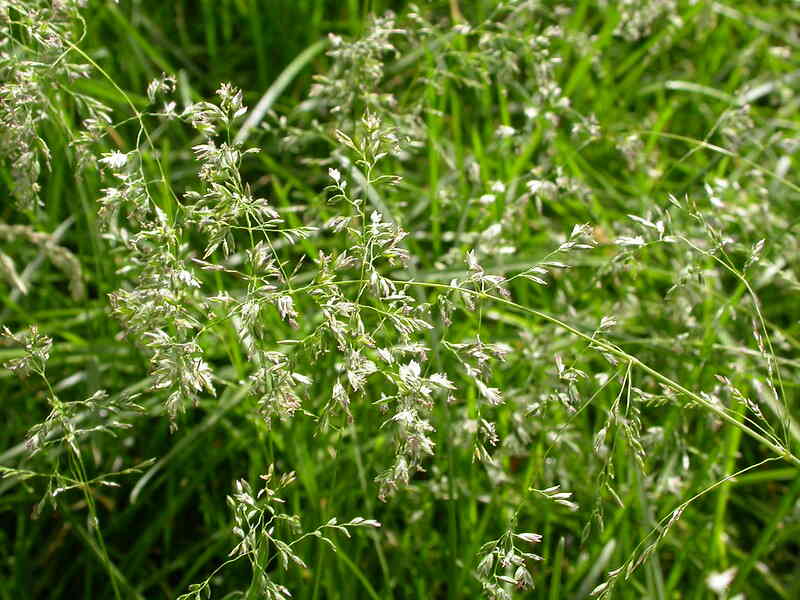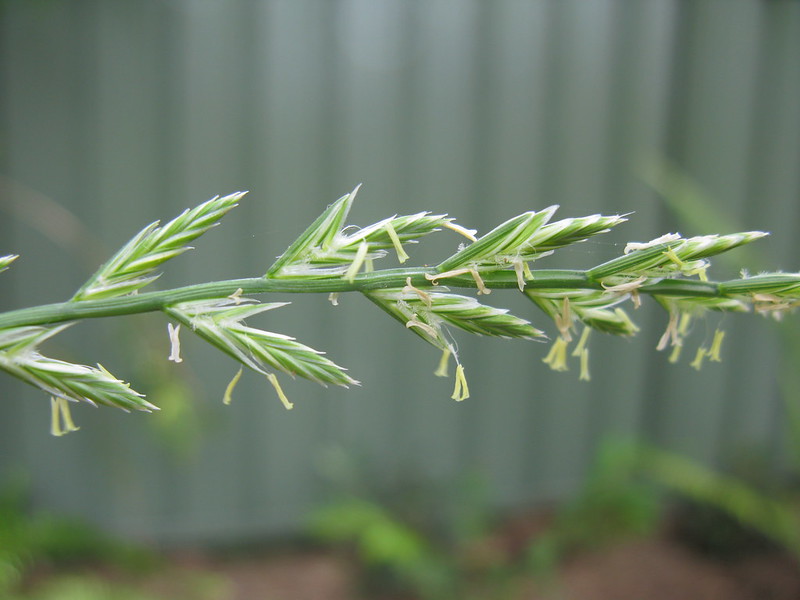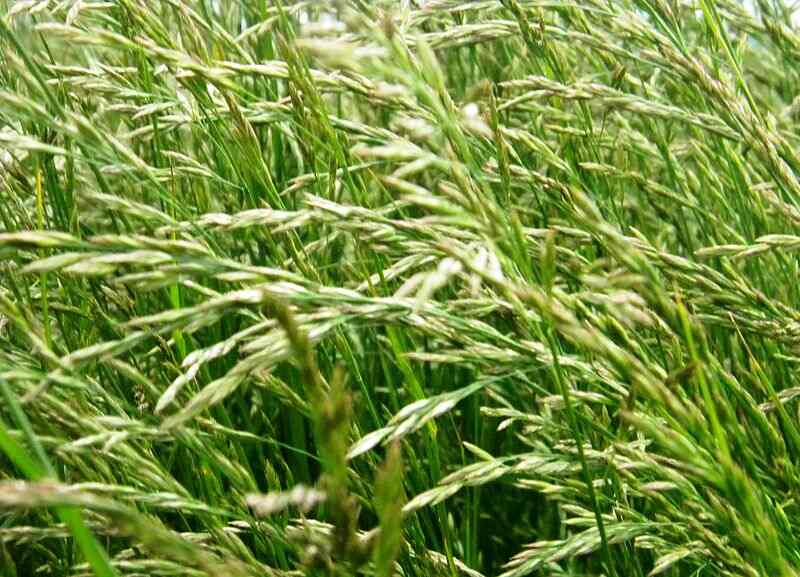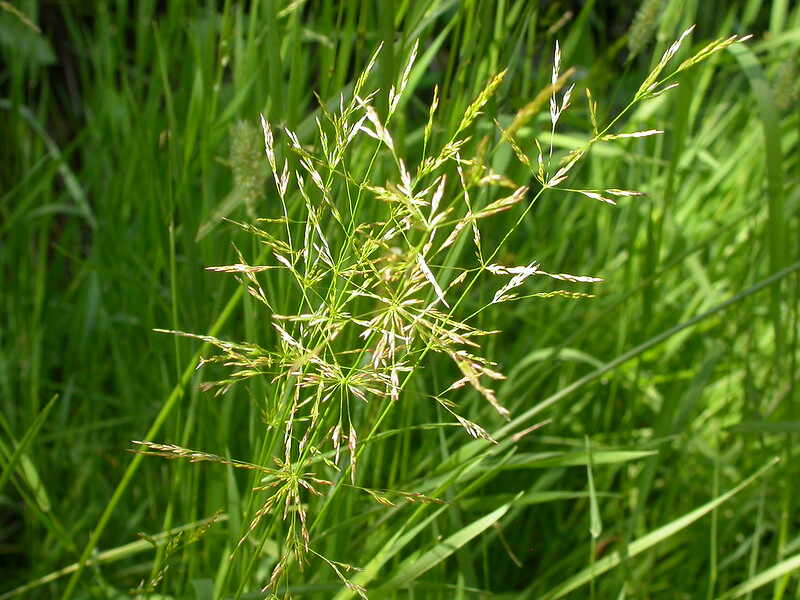5 Best Grass Types for Detroit
BY TATIANA BARRIE | APRIL 1ST, 2023 | DETROIT, LAWN CARE, MICHIGANWhether you like to host the neighborhood Winterfest or view the Ford Fireworks from your yard, having the right grass type is key. Your grass needs to be sturdy enough to handle all the lawn chairs and foot traffic, yet soft enough to cushion your falls during those epic snowball fights. To help you get your yard ready, we’ve compiled a list of the best grass types for Detroit lawns.
From humid summers with heavy rains to cold, snowy winters, the Motor City’s weather can take its toll on even the toughest grasses. The solution? Planting cool-season grasses. These hardy species are the only types of grass that can withstand the unpredictable weather conditions of Detroit.
In this list, we’ll take a look at 5 cool-season grasses: Kentucky bluegrass, tall fescue, perennial ryegrass, fine fescue, and creeping bentgrass. It’s worth noting that the best type of grass for your lawn will depend on a variety of factors, such as the amount of shade, maintenance requirements, and foot traffic. Let’s dive in!
In this article, we’ll cover:
Warm-Season vs. Cool-Season Grasses
Warm-season grasses are those that thrive in warmer climates and are commonly found in the southern regions of the United States. They turn green when temperatures warm up in spring, and go dormant during the winter months.
Cool-season grasses are better suited for cooler regions. They grow best when soil temperatures are between 50 degrees and 65 degrees Fahrenheit (during spring and early fall), and enter winter dormancy when soil temperatures drop below 45 degrees Fahrenheit.
5 Cool-Season Grasses for Detroit
Cool-season grasses are an excellent option for lawns in Detroit, as they can handle the harsh winters and humid summers that are typical in the northern half of the United States.
1. Kentucky Bluegrass

Photo Credit: Matt Lavin / Flickr / CC BY-SA 2.0
Kentucky bluegrass is the most popular choice among homeowners in Detroit. If you like to host Red Wings-themed BBQs or just have kids that love to play outdoors during the holiday season, then this type of grass should be on your radar. Its blades are tough enough to withstand heavy foot traffic, and it has an aggressive sod-forming nature that allows quick recovery from damage.
Kentucky bluegrass has a rich, deep green hue and grows best in full sun conditions. This means it doesn’t tolerate shade as well as other cool-season grasses (like fine fescue), so it’s not the best option if your yard has lots of trees and shrubs in it. While it can resist drought, keep in mind that you’ll need to water it and fertilize it regularly to keep it looking its best.
Classification: Cool-season grass
Spreads by: Rhizomes
Shade tolerance: Low shade tolerance, among the lowest of any cool-season grass.
Drought tolerance: Moderate – if the lawn is not properly irrigated during hot months, the grass will become brown.
Foot traffic tolerance: Moderate – however, its rhizomes give it an exceptional capacity to quickly recover from damage.
Maintenance needs: Moderate mowing frequency and high fertilization needs.
Mowing height: 2.5 – 3.5 inches
Potential for disease: Moderate to high; prone to several diseases, such as dollar spot, leaf spot, necrotic ring spot, summer patch, and stripe smut.
Soil pH: 6 – 7.5
Soil type: Performs best in well-drained, heavy soils with high fertility.
Other notes: Kentucky bluegrass takes longer to sprout compared to other cool-season grasses. To achieve a thick and healthy lawn in a shorter time, using a blend of grass seeds is recommended. Perennial ryegrass and specific types of fescues (such as fine fescue) complement Kentucky bluegrass well.
2. Perennial Ryegrass

Photo Credit: Harry Rose / Flickr / CC BY 2.0
Perennial ryegrass is known for its fast germination and rapid growth, making it an excellent choice for overseeding or establishing a new lawn. If you have pets that like to dig in the yard,
it will fill in bare spots in a matter of weeks and provide a more uniform appearance to your lawn overall. You’ll need to mow and water it frequently to maintain its lush appearance, but it’s highly adaptable to different soil types and can tolerate romping kids, yard sports, and parties.
One downside to perennial ryegrass is that it can struggle to survive during periods of extended heat –think of Detroit’s harsh summer months (July – August). It also tends to be more susceptible to disease than some of the other grasses on this list, especially with Detroit’s humidity.
Classification: Cool-season grass
Spreads by: Bunch-type growth habit
Shade tolerance: Low
Drought tolerance: Low
Foot traffic tolerance: High
Maintenance needs: Moderate mowing and fertilization requirements. Thatch buildup isn’t significant.
Mowing height: 1.5 – 2.5 inches
Potential for disease: High. Common diseases include gray leaf spots, red thread, and leaf spot/melting-out.
Soil pH: Can grow in soils with a pH between 5 and 8 but prefers between 6 and 7.
Soil type: Prefers good drainage and fertility but can tolerate some poor drainage.
Other notes: It’s very common to mix between 10% to 15% of perennial ryegrass with Kentucky bluegrass in order to improve the bluegrass germination and achieve a more healthy and traffic-tolerant lawn.
3. Tall Fescue

Photo Credit: Bildoj / Wikimedia Commons / CC BY-SA 3.0
Tall fescue is a great choice for homeowners who want a low-maintenance lawn that can withstand Detroit’s climate and environmental stressors. Additionally, this grass type has a deep green color and a fine texture, giving it an aesthetically pleasing appearance that can enhance the curb appeal of any property.
It adapts well to most soil conditions, and has a deep root system that allows it to tolerate drought and heat better than many other grasses. Tall fescue is also tolerant of many common lawn diseases and pests in Michigan, such as dollar spot, brown patch, white grubs, and chinch bugs. And while you’ll need to mow it regularly (it grows fast), fall fescue doesn’t require frequent watering and fertilizing.
Classification: Cool-season grass
Spreads by: Produces short rhizomes but has a bunch-type growth habit
Shade tolerance: Moderate
Drought tolerance: Moderate to High
Foot traffic tolerance: Moderate
Maintenance needs: Frequent mowing. Does not produce significant thatch.
Mowing height: Set mowing height to 2 inches when grass reaches 3 inches tall.
Potential for disease: Tolerant of most diseases when properly maintained.
Soil pH: 5.5-6.5
Soil type: Adapted to a wide range of soil conditions but prefers fertile clay soils with good drainage.
Other notes: It doesn’t mix well with other grass types, so it’s best to seed it by itself.
4. Fine Fescue
Fine fescue does well in full sun, but is also the most shade tolerant cool-season grass you can get your hands on – especially the chewings variety. It resists drought pretty well and doesn’t require much fertilizer to grow.
However, if you plan to celebrate the Detroit Tigers on Opening Day in your yard, this grass type isn’t ideal. It doesn’t have as much traffic tolerance as perennial ryegrass or Kentucky bluegrass.
Now, one of the most significant benefits of fine fescue is its low maintenance requirements. It’s a slow-growing grass that doesn’t require frequent mowing, making it a great choice for homeowners who want a beautiful lawn without the hassle of constant upkeep.
Classification: Cool-season grass
Spreads by: Creeping red Fescue spreads by rhizomes, while other fine fescues are bunch-type grasses, such as chewing, hard, and sheep fescues.
Shade tolerance: Moderate to High, depending on species
Drought tolerance: Moderate to High, depending on species
Foot traffic tolerance: Low to Moderate, depending on species
Maintenance needs: Low fertilizer and mowing needs.
Mowing height: Set mowing height between 2.5 and 4.0 inches, depending on species.
Potential for disease: Moderate. Common diseases include red thread, leaf spot, dollar spot, summer patch, and powdery mildew.
Soil pH: 6-6.5
Soil type: Will not perform well in wet soil conditions. It prefers drier soils and tolerates a wide range of soil types and fertility.
Other notes: When used in combination with other types of cool-season grasses, fine fescue can help create a low-maintenance, healthy green lawn.
5. Creeping Bentgrass

Photo Credit: Matt Lavin / Flickr / CC BY-SA 2.0
Creeping bentgrass is the Cadillac of Motor City’s lawns, providing a velvety-smooth, carpet-like texture that’s perfect for golf courses and high-end landscapes. But be warned –– if you’re not willing to invest the time and money necessary to manage it properly, you may be in for a rough ride.
The truth is, creeping bentgrass requires a lot of maintenance to keep it looking its best. Neglect it, and it can quickly become overgrown and adopt a rough weed look. It’s also highly susceptible to pests and diseases, which can be difficult and expensive to control.
Classification: Cool-season grass
Spreads by: Stolons
Shade tolerance: Moderate
Drought tolerance: Low
Foot traffic tolerance: Moderate
Maintenance needs: Requires frequent watering, fertilizing, dethatching, and mowing.
Mowing height: 0.5 – 0.125 inches.
Potential for disease: High disease potential. Common infections include dollar spot and brown patch.
Soil pH: 5.5-6.5
Soil type: Prefers moist soils with good drainage.
Other notes: Without proper care, creeping bentgrass has the potential to quickly spread into other turf areas nearby.
FAQ About Detroit Grass Types
The ideal time for planting grass seed in Detroit is typically towards the end of summer, specifically between mid-August and late September. This is a suitable time because the high heat and dry conditions of summer have passed, and rainfall becomes more frequent.
If you miss the fall planting season, early to mid spring is the second-best time to plant grass seeds, but it’s recommended to avoid planting beyond mid-June.
For those looking to cultivate a soft, comfortable lawn in Detroit, Kentucky bluegrass is the best option. This cool-season grass is well-suited for heavy traffic areas and is known for its thin, fine blades that give it a soft texture and appearance.
When it comes to low-maintenance grass options for Detroit, fine fescue grasses are often a great choice. This grass type adapts well to the climate and soil conditions in Michigan, and it requires less fertilizer, water, and mowing than other cool-season grasses.
Perennial ryegrass is a fast-growing grass that is often used for overseeding or patching up bare spots in lawns. It’s also ideal for areas that need to withstand foot traffic and wear and tear, like around playgrounds and athletic fields.
Choose Plant and Grass Varieties for Your Detroit Landscape
Choosing the right grass for your Detroit lawn can make all the difference in its appearance and overall health. Consider factors such as shade tolerance, soil type, and maintenance requirements when deciding which grass type to plant.
The five grass types we discussed are all great options for Detroit’s climate and soil conditions, but there may be other species that best complement your unique landscape. Don’t forget to explore the vast array of native plants that thrive in Michigan’s climate and consider incorporating them into your lawn.
If you want to create a comfortable and inviting outdoor space for you and your family to enjoy, contact a Detroit lawn care pro today.
Main Image Credit: Arther M. Parker House Detroit / Andrew Jameson / Wikimedia Commons / CC BY-SA 3.0